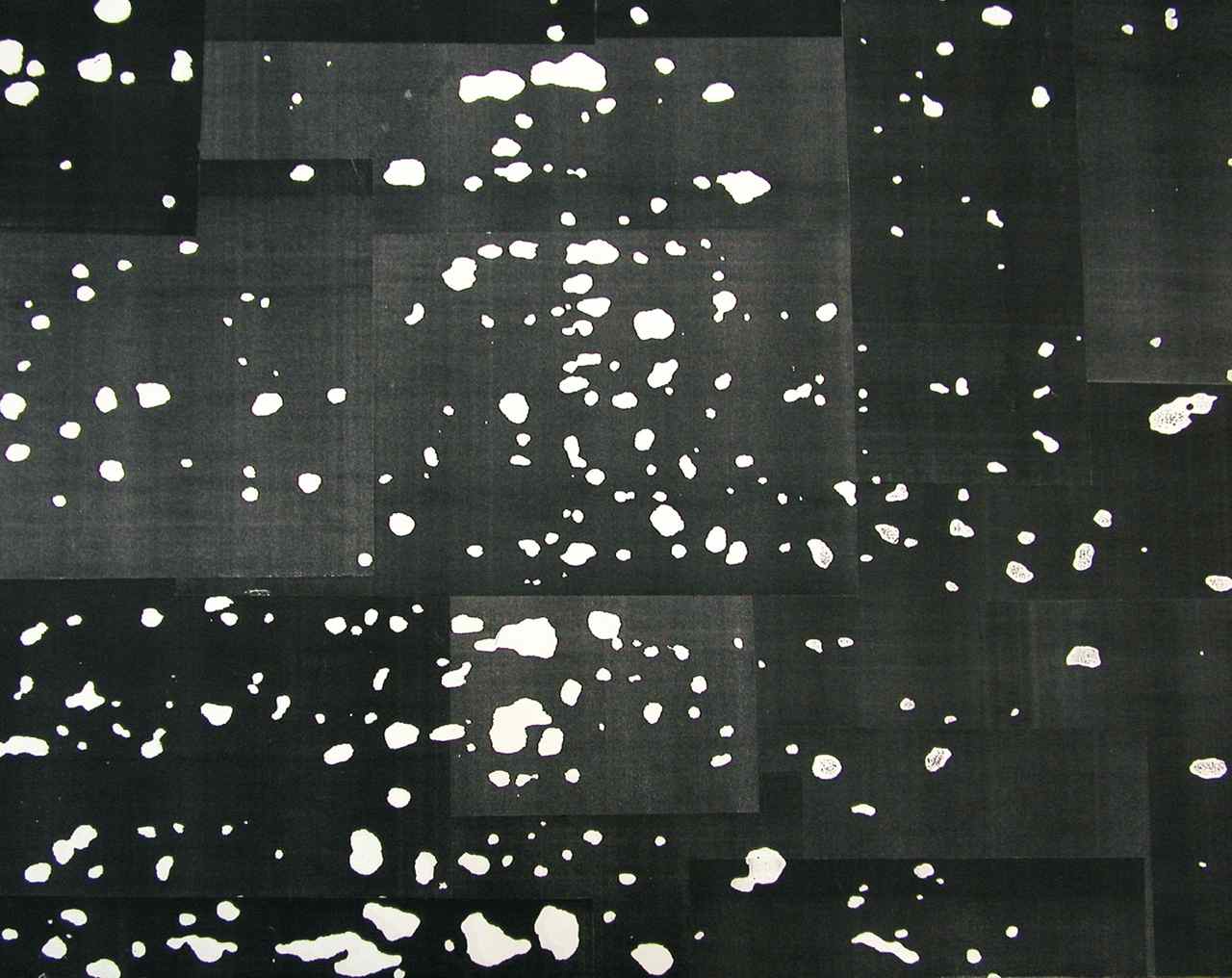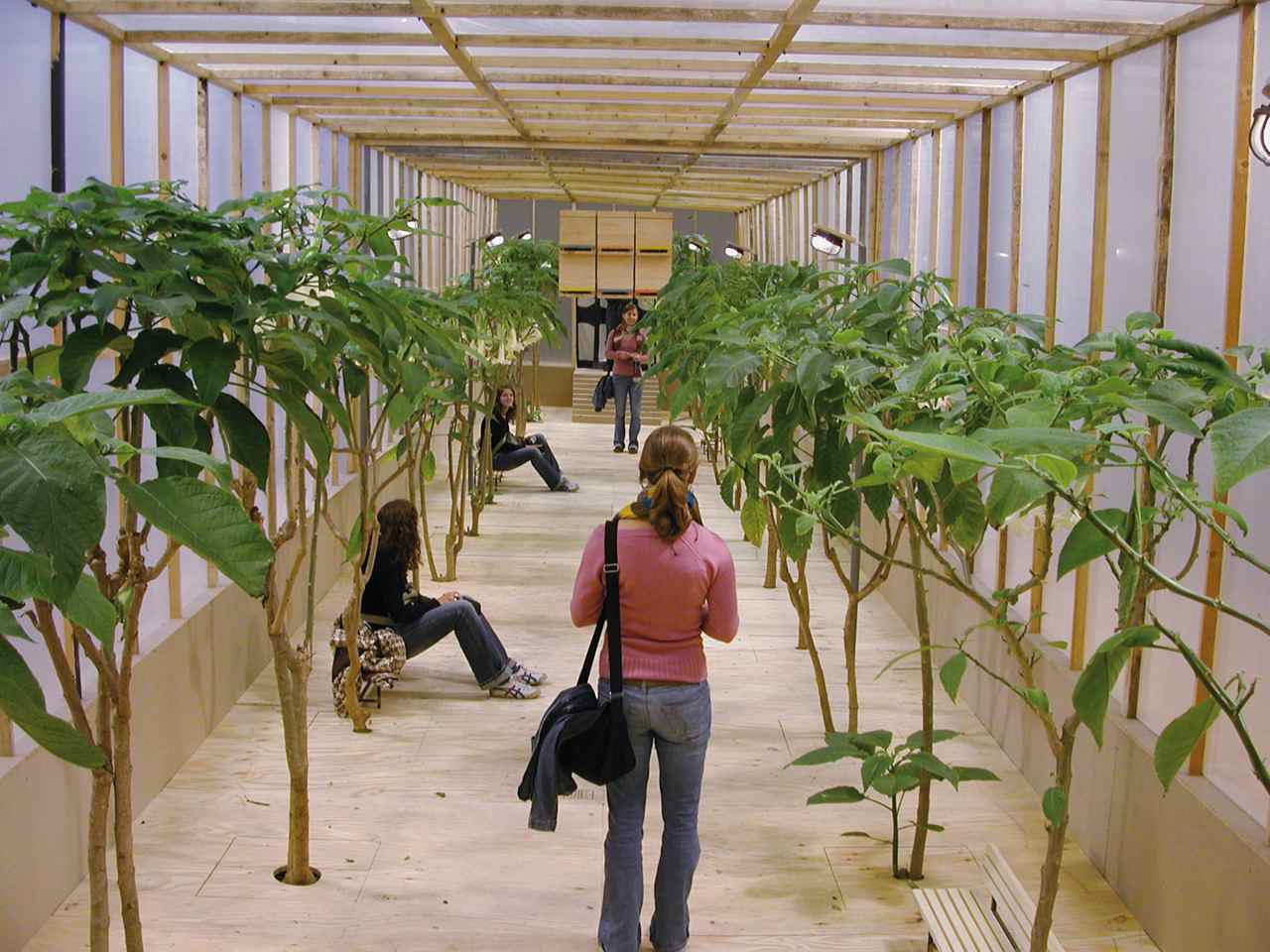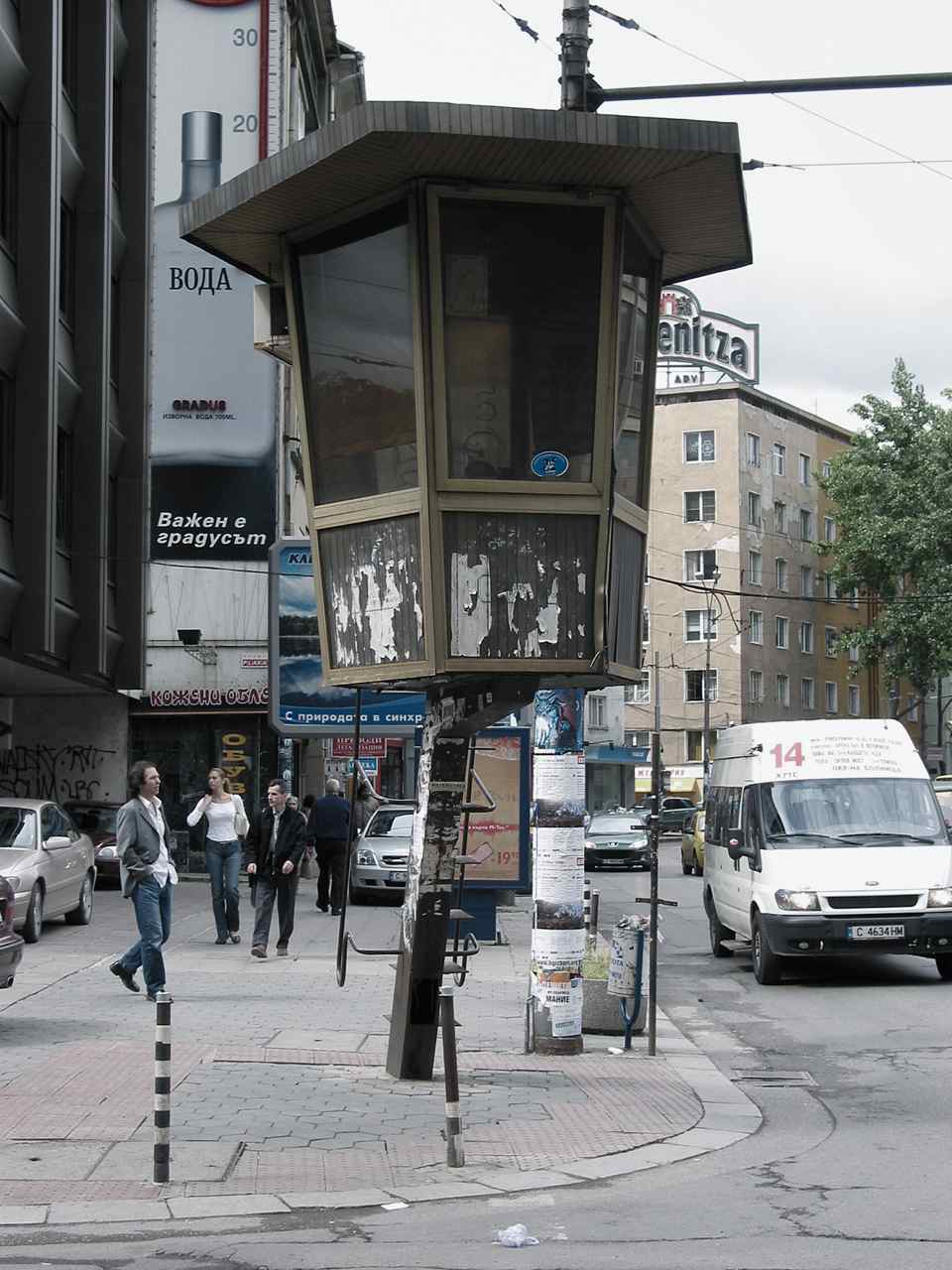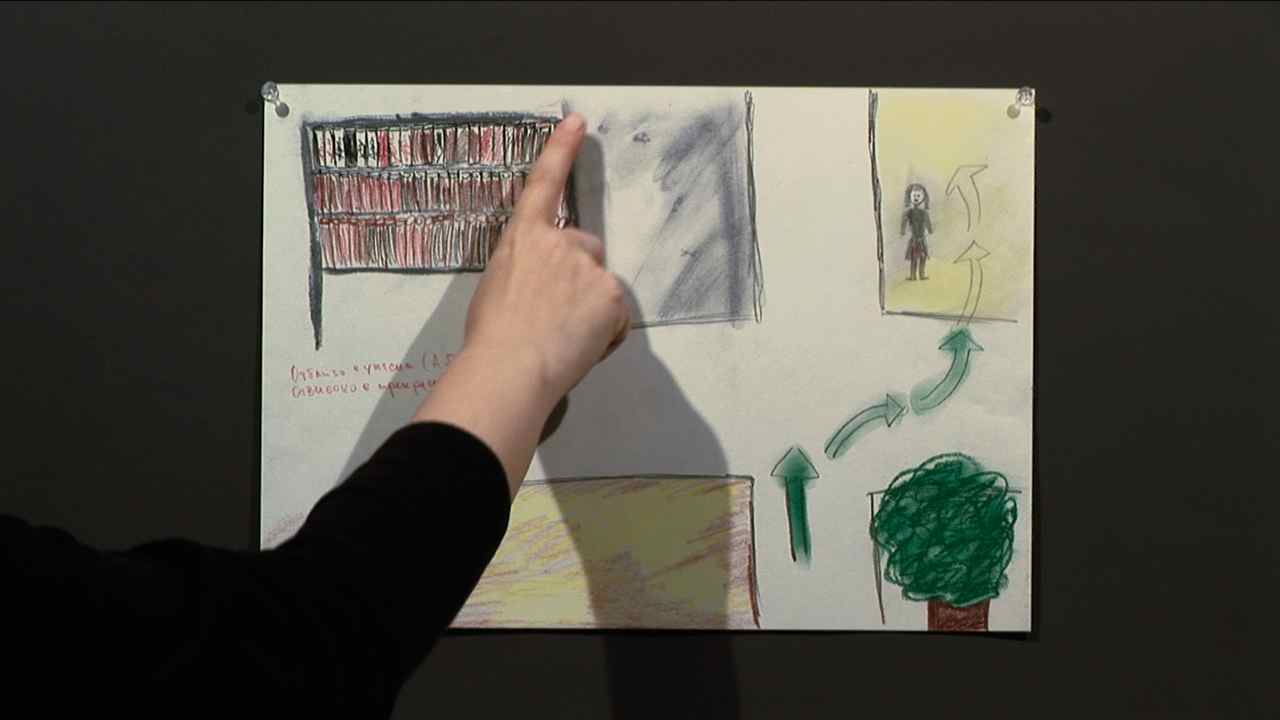whitehot | October 2008, Interview with the curators of Der Blind Fleck

Ilka Meyer
1001, 2004
360 x 660 cm
Installationsansicht
Courtesy of NGBK and the artist
Foto: Ilka Meyer
© Ilka Meyer
Jaime Schwartz Interviews curators Lith Bahlmann and Anke Hoffman
Neue Gesellschaft für Bildende Kunst
Der Blind Fleck
Through October 19, 2008
Recently
I discovered the past and present works of artists from the Balkans and
immediately decided I wanted to head anywhere in the vicinity. The
works of many of these Balkan artists, such as Luchezar Boyadjiev and
Slovene collectives Irwin and NSK, investigate the dynamic interactions
of cultural and visual contexts in regards to urban space and the
overlapping identities Eastern Europeans occupy. What interested and
inspired me in the work coming out of such nations was how these
artists were dealing with the abrupt transitions going on around them;
Changing from former communist countries into part of the European
Union all the while negotiating new recognition from the West. I wanted
to see how artists were reacting to these changes and how these changes
affected both the personal and political memories of these nations.
I
think we can all agree that at some point almost every Government has
tried to cover up its past mistakes through creating new connotations
to physical sites, by renaming or reconstruction, or through
repositioning the collective consciousness of historical phenomenon.
However, Governments are not the only ones with an interest in
reshaping the memories of the not so pleasant past. What about people?
How do we personally play a role as well in the dichotomies of
remembering and forgetting, both collectively and individually?
Well,
I didn’t wind up in Slovenia or anywhere else in the newly coined
“Western Central Europe” (i.e. the Balkans) but here in Berlin I did
find a gallery that was also interested in exploring these issues.
The exhibition Der Blind Fleck
(the blind spot) hosted by the Neue Geselleschaft fur Bildende Kunst
(NGBK) uses the blind spot, an optical phenomenon, to explore the
social and political dialectic of memory and forgetting. A blind spot
is produced by the insensitivity of the retina region of our eye,
creating a temporary inability to visually access everything in our
surroundings. The artists in this exhibit have used the blind spot as
metaphor for the way both cities and people rebuild or abandoned in
order to make tragedy and trauma inaccessible and unseen. The
exhibition displays the power of both physical and psychological
spaces, examining how the human mind can also create blind spots
through our ability to forget or selectively remember.
For me
the exhibit brought up some larger questions and I was fortunately able
to address these with the curators Lith Bahlmann and Anke Hoffman.
Jaime Schwartz:
What is the significance (if any) of displaying this show here in
Berlin? Do you think the unification of Germany is somehow an
example (good or bad) of a city remembering/forgetting the past, or
somehow parallel to the experiences of those living in former communist
states?
Lith Balhmann: Well, in the
current discourses about the politics of remembrance and memory,
Germany is still a country post-Auschwitz: all political events are
somehow related to this dark side of Germany’s past and are subject to
interpretation under this historical and political parameter. Berlin
itself is based on the past always relating to great narrations of
progressiveness and victory in the sense of grand triumph and success.
Monuments such as the Reichstag and the Brandenburg Gate are no longer
manifestations of power but have since transformed into physical
symbols of memory and their connotation has changed and will continue
to change.
However, our
thematic approach to the exhibition is not exclusively politically
motivated. We didn’t try to draw comparisons concerning questions about
the coping with history in the post-socialist EU-states. The exhibition
title Der Blinde Fleck serves us in our curatorial
investigations primarily as a metaphorical vehicle allowing us to
widely associate the very different aspects of the mechanisms and
meanings of forgetting, selective disremembering and memory repression.
The exhibition shows a selection of international artistic positions,
concerning not only the phenomenon of reality, but also illuminating
varied social discourses. We chose works that concern issues of
obliteration and reduction purely aesthetically and works that actively
question the human perception of blind spots, for example, the
internet-platform Zone*Interdite by the Swiss artists Chrisoph Wachter and Mathias Jud.
Anke Hoffman:
For me, the significance of the exhibit being displayed in Berlin is
similar to the predicament of almost every society that has experienced
a political (and ideological) transformation. The significance being
that architectural symbols and landmarks in a City are constantly being
re-interpreted according to the perspective of the current political
power. This change of perspective evokes specific historical stories
and historical contexts in regards to the ruling power. This has
happened in Berlin after the re-unification, and in many other former
East European cities that are still in transition. For example in
Berlin, street names have been changed, the city has been "cleansed" of
former "heroes" without questioning and the much discussed dismantling
of the former Palace of the Republic which attempts to negate the 40
year history of a communist/socialist run country with all its
ambivalent decisions and ideologies.
So in this example, yes, there is a certain motivation to make such an
exhibition about these topics here in Berlin, although as Lith stated,
we consider this exhibition to have a wider theme than only the
political and historical issues of a national culture. Nevertheless,
you can read something about the dealing with history in different
transforming cities in the work of Hörner/Antlfinger, who researched
individual coping strategies within Sofia, Bulgaria, and also in the
work of Hito Steyerl, about the former ideological history of the
Yugoslavian "Idea".
JS: Do you think
there is a difference between not forgetting and remembering?
Does one have a more positive connotation? And how are the
artists playing with the dichotomy?
LB:
I think there is no forgetting without remembering and no remembering
without forgetting, however, it is difficult to say which one is
politically more dangerous since both options have the tendency to
obliterate the past whether through exclusion or through the attempt to
control and predetermine how these acts should be introduced into the
cultural memory of today and tomorrow. In this context, forgetting has
a more negative connotation. However, there are also positive aspects
concerning forgetting which can be seen in the large-scale installation
Allee der Schlaflosigkeit (Avenue of Wakefulness) from Berlin based artist Klaus Weber and the series of paintings from Albrecht Schäfer.
The Avenue of Wakefulness
is an architectural model filled with blooming Angel’s Trumpets whose
fragrance is said to have a narcotic effect. Weber’s idyllic setting
provides a place of intoxicated transgression of the existential
boundaries of time and space temporarily withdrawn from reality that is
dominated by control mechanisms and security concepts. When one enters
this installation, there is a temporary loss of control and loss of the
self that becomes a Dionysian experience of “forgetting oneself”. This
can ultimately be read as the antithesis of the Apollonian impulse
towards harmony and control. Albrecht Schäfer, shows in his work that
selectively disregarding redundancies can lead to an active form of
forgetting and finally to a cleansing process. In his piece The Sun, 4.8.2007
Schäfer changes every single page of an edition of a selected English
tabloid into a monochromatic grey surface, effacing the object’s
significance, leading to a white noise of information.
AH:
The only thing worse than losing your mind ... is finding it again, to
paraphrase director David Cronenberg and the introductory quote from
film historian Matthias Wittman’s essay in the exhibition catalogue.
There are definitely a lot of positive aspects and appeal to
forgetting. Forgetting helps us to overcome some of our everyday
feelings of pain and frustration. However, forgetting is a virulent
part of these rather psychological and social behaviors.
Beside the works of Weber and Schäfer we have also put this method to
work in the exhibition design itself. You enter and are confronted with
rather sensual and abstract works and then further inside you come
towards the issues of politics, history and research. Once you have
walked through the entire exhibition you enter Weber’s Avenue of Wakefulness
and find yourself in a idyllic garden setting of bumble-bees and
wonderful smelling flowers, allowing you to relax and almost forget
what you have just heard and seen...
Klaus Weber
Allee der Schlaflosigkeit, 2005
Installationsfotos
Courtesy Andrew Kreps Gallery and NGBK
© Klaus Weber
JS:
Do you see people or places having an advantage in the not
forgetting/remembering dichotomy? Do you feel on is more
successful/holds more weight than the other? For example the
video Piece Journal # 1 - An Artists impression vs. the photographs of
Richard Chutz and the video of Nina Fisher and Maroan El Sani.
LB:
I see those three pieces engaged in the forgetting of history in very
different ways. I feel they follow different thematic approaches and
thus are open to different thematic discourses. In this sense the whole
exhibition possesses no narration but naturally the works correlate to
each other and that is of course intended and desirable in a group
show.
The photographic series Jetztzeit
(Realtime) from Richard Schütz operates in a fascinating realm
in-between a fictionalized and documentary-style representation of
history. His images question the consequences of fictionalizing history
and how this has now become one of the most popular forms of media
entertainment. The photograph from his series titled Ausblendung
(Fade Out) shows the Palace of the Republic behind a casing-wall,
clearly referencing the present political need to erase contemporary
evidence of German state socialism by eradicating its symbols and at
the same time it’s like a historical déjà-vu to reconstruct the
Prussian city palace. This process exemplifies the present relationship
between West Germany and East Germany.
Hito Steyerl’s film rather deals with subjective means of giving
testimony and individual reconstruction of history that exist for the
multiethnic citizens of the former Yugoslavia. These memories consist
of very different images, exemplifying that there is not only one
single narration.
In Nina Fischer and Maroan el Sani’s film Toute la memoire du monde-BNF I
deals with the loss of traditional knowledge spaces in today’s
internet-based world. Their film addresses how we are currently
confronting an information overload while simultaneously experiencing
an increase of forgetting. As if the over saturation of information is
creating yet another blind spot.
Richard Schütz
Ausblendung, 2003
60 x 90 cm
Courtesy of NGBK and the artist
© Richard Schütz
Nina Fischer / Maroan el Sani
Toute la mémoire du monde - BNF I, 2006
C-Print, 124 x 150 cm
(statt Videostills der Videoarbeit)
Courtesy Galerie EIGEN + ART Leipzig/Berlin and NGBK
© VG Bild Kunst, 2008
AH:
Let me add some other points to my colleague’s answer. First, we did
not commission any new works for this show, so none of these artists
intended on meeting our curatorial ideas; however, they were all very
delighted when we introduced our topic to them and invited them to take
part in the show. We did not want an exhibition where all the works
deal with all the same issues so we chose a variety of works, some more
narrative, others more associative and therefore interact with the
visitors in a more subtle and sensual way. We wanted to create a varied
response for our visitors so there might be works which are more
accessible, more readable than others – in the way of what they are
talking about - but there is this underlying unconscious access to art
and its topic, which functions best if you mix issues and formats with
each other. An exhibition is also a sensual parcours of understanding.
JS:
Do you think the cultural/political themes this show accesses help or
hinder the "healing" process for spaces that have been sites of
trauma/tragedy. How does one begin again and at what point is
this acceptable?
LB: A trauma -
individual or national based – that is not worked through and exposed
becomes a danger to repeat itself, or so teaches the psychoanalysis.
Ousted contents, painful or shame-related experiences should become
regarded, worked out and be integrated in the reality. I think using
artistic reflection, as a coping strategy, is a very good method and
one that contributes to the healing - and reconciliation process.
Oftentimes artistic expressions allow us to change our perspective by
actively trying to rehabilitate taboo themes and exposing questions
related to these taboos.
AH: To me this is a very complex question and I will try to comment with the example of the recently released film Baader Meinhof Complex
that has produced many heated and diverse discussions about this
question. The movie is about the terrorist group the RAF (Red Army
Faction) that was active during the 1970s, and which is still a subject
of national "healing". The German people have quite diverse and often
emotional reactions to what happened and are still interested in
finding out the truth. In the last ten years much better films on this
topic have been made but this new film is a so-called Blockbuster, an
entertainment film. So is it suitable to make a blockbuster film 30
years after this national trauma? I think this will motivate a dialogue
of dealing and healing in Germany.
JS: How
do you think the European Union is helping or hurting, for example in
countries with recent admittance such as Bulgaria and Slovenia, other
"Balkan" States deal with the history of these places?
LB:
I think that there is a discrepancy between the economic and cultural
integration of the new EU-states. For example, if states like Slovenia
or Bulgaria are economically integrated but yet are still in the
process of ongoing economic change this winds up creating further
cultural segregation from the rest of Europe. The related problems and
questions of identity are addressed by Ute Hörner and Matthias
Antlfinger in their multi-part installation Sofia Time Travel Experiment – Speaking with the unconscious social mind.
The artists used the methodology and ideas of American psychotherapist
Milton H. Erickson in order to study the sensitivities of
post-socialistic mentalities. He used the idea of mental time-travel to
enter into a dialogue with the unconscious mind, and thereby evoke
images from the past, and visions of oneself in the future.
In the recordings made by the artists, the protagonists mix
autobiographical memories with descriptions of the contemporary
historical phenomenon of the urban public space. This “oral history” of
the recent past and present in Bulgaria reveals hardly any bitterness.
Future-orientated visions reveal longings for safety, cleanliness, and
control and insecurities in the face of new social requirements. A
collective personal testimonial is expressed in the complexity of the
participants´ statements, a psycho- gram of the change of a social
system going beyond stereotypes and self-protectiveness. As opposed to
strategies of selective disremembering that one is often confronted
with when dealing with the post-socialistic past, psycho-social
practices used by artistic approaches may be capable of initiating a
subjective method of coping with the past, and a more interpersonal
exchange.
Hörner / Antlfinger
Sofia Time Travel Experiment – Speaking with the unconscious social mind, 2006
Fotos und Videostills
Courtesy of NGBK and the artists
© Hörner/Antlfinger
Hörner / Antlfinger
Sofia Time Travel Experiment – Speaking with the unconscious social mind, 2006
Fotos und Videostills
Courtesy of NGBK and the artists
© Hörner/Antlfinger
AH:
As Lith mentioned, the work of Hörner/Antlfinger gives a very
interesting insight into the souls of people in such a "transforming
city". We learn about their fears and hopes. The EU is a big step for
all these countries and combined with the hope to be "part of the
family" comes the disadvantages and disappointments. Therefore, I
think, in regards to whether the EU is helping or hurting a general YES
or NO is impossible to state.
JS: As
curators what is your role in this? does it fall into the
remembering or not forgetting? Where do you see yourselves in the
exhibition?
LB: At this point I would
like to mention the special and unique structure of our institution,
the Neue Gesellschaft für Bildende Kunst (New Society for Visual Arts)
in which members work together on different exhibition themes. In
addition to the changing project teams, a number of groups have been
engaged in more long-term continuous work. The development of our
concept preceded a discursive working process in the project group
RealismusStudio. The NGBK´s RealismusStudio has been in existence since
1973, albeit with changing personal. It addresses contemporary artistic
positions on current social questions. In this way, young, less
well-known and unknown artists, as well as internationally renowned
artists, enter into dialogue.
In this particular case of “the blind spot” my colleague Anke Hoffmann
and I did not have a prefab thesis to this project. Our point was to
follow a wide spread process of research which aimed to create a room
for reflection belonging to our questions on the topic of forgetting,
selective disremembering and memory repression. The result of our
research is visible in form of the exhibition, a catalogue and a small
number of events, including performances, a film- and video program and
some lectures. With all this we hope to inspire and make suggestions to
the visitors, to make them come closer to their own thoughts and
reflections on these themes.
AH: On both sides, naturally, thanks for your interesting questions.
 | Jaime Schwartz is a freelance curator whose eye is lately focused on contemporary artists probing the uncertainties of contemporary urban life, especially those living and working in countries and cities undergoing abrupt transition. Jaime recently graduated with a Masters degree in Curatorial Practice and Contemporary Art Theory from San Francisco State University and is currently living in Berlin. While in Berlin Jaime enjoys admiring the mix of architecture and riding her bike in between studying German and working at AA- Galleries. jaimediamonds@yahoo.com |


